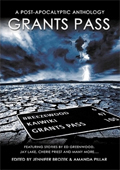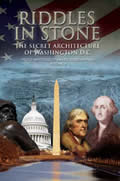U. S. INFRASTRUCTURE DECAY: COST $2.2 TRILLION
By Frosty
Wooldridge
January 31, 2011
NewsWithViews.com
In this report on America’s challenges for the 21st century, William Dickinson, director of The Biocentric Institute, exposes underlying realities facing America. You may access much of the information here.
You may appreciate that the United States continues to grow by adding 3.1 million immigrants annually, but in the process, it must shell out $346 billion to care for their education, medical, housing, food and amenities across 15 federal agencies. Meanwhile, our infrastructure rots, disintegrates and breaks down often.
The water and sewages systems in our older cities like New York, Boston, Chicago, Atlanta, Los Angeles, Denver, Dallas, New Orleans and many more exceed 100 years of age. While we wage warrantless wars and reconstruct other nations, our own country falls into disrepair as bridges crumble, roads crack into pieces and buildings decay. Much like the 68 percent of Americans that suffer from weight problems that will cost them at some point—America’s infrastructure faces the same fate.
As we steam full speed into the 21st century Mr. Dickinson, what parts of America’s infrastructure need attention?
“Infrastructure is one of those words -- such as process, paradigm, challenges -- that cause a reader’s eyes to glaze over,” said Dickinson. “Too bad, because we are talking about the underlying foundation on which great civilizations are built. The Roman Empire flourished for centuries on the framework of paved roads and cleverly engineered aqueducts. The United States itself grew to greatness by building a national highway system, transcontinental railroads, massive dams generating electricity, and breathtaking bridges connecting people and commerce.
“But contemporary America has little taste for “public works” when they compete with private wants. Our consumer society is built on the here and now. We explain our reluctance to raise taxes or borrow for vital public purposes as a desire to avoid leaving our children and grandchildren with massive debt. Gov. Edward Rendell of Pennsylvania, a Democrat, says that what we’re leaving our posterity instead are “roads so congested nobody’s going to get anywhere, with a light-rail system that’s a joke, with airports that are clogged and increasingly dangerous, with bridges that fall down.”
“This issue will spill over into the new Congress as well as state legislatures and city councils in 2011. It pits those who believe any further fiscal stimulus irresponsible against those who view infrastructure spending as an investment in America’s future. Each $1 billion of infrastructure spending, proponents argue, creates 25,000 jobs that can’t be outsourced. Public safety and improved quality of life also are seen at stake. An editorial in The Wall Street Journal (Oct. 15, 2010) acknowledged that many public works projects would be worth the money by contributing more to general economic efficiency and growth than they cost. “But they’ve been crowded out,” the Journal charged, “by the liberal vote-buying politics of transfer payments and government union payoffs.” Finding common ground won’t be easy.
“How bad is our nation’s infrastructure deficit? A recent report card from the American Society of Civil Engineers estimated that it will cost $2.2 trillion over a five-year period to raise the U.S. infrastructure grade from poor to acceptable. Measure this against the roughly $100 billion from the 2009 “stimulus” legislation that had in fact gone toward infrastructure construction projects as of last fall. Deficit-ridden cities find putting off preventive maintenance and replacing obsolete equipment as tempting ways to cut budgets. Henry Petroski, professor of civil engineering and history at Duke University, warns: “Potholes know no politics….Bridges will corrode and collapse. Pipes will crack and burst. The physical foundations of our civilization will crumble under the weight of our complaints about it and our neglect of it. It will happen so fast it will be impossible to keep up with its repair.”
“The dilemma posed by infrastructure spending was seen in microcosm last fall when New Jersey Gov. Chris Christie stopped work on a new commuter-train tunnel that would run under the Hudson River into Manhattan. A federally-assisted project that was supposed to cost $8.7 billion faced a revised cost of $11 billion to $14 billion. “I can’t put taxpayers on a never-ending hook,” Christie said. The fact that the nation can’t even afford to build a railroad tunnel under a river highlighted the failure of government to bring the nation’s infrastructure up to 21st century standards. This includes America’s out-of-sight network of water systems, some of them built by our great-grandparents and now threatening public health and safety.
“Meantime, many nations around the world look to the future by developing critical infrastructure. China plans to spend $295 billion in the next decade to build a high-speed rail network, totaling 10,000 miles, that will connect its major cities. A World Bank report last July praised the project, saying it could speed passenger traffic, free up overloaded freight routes and reduce dependence on autos. One route, between Shanghai and Beijing, could cut travel time from 10 hours to four at speeds up to 302 mph. And China will spend $10 billion to connect the inland cities of Chengdu and Xi’an with a 320-mile railroad that will cut travel time to two hours from the current 13. Contrast this with the decision by the newly elected governors of Wisconsin and Ohio to forgo $1.2 billion in stimulus money for passenger-rail projects in their states. And a high-speed rail project in California that would connect Los Angeles and San Francisco has been derided by critics as “a train to nowhere” because the first leg would connect L.A. with the inland city of Bakersfield.
“While
the United States is in retreat from big public works projects, on
the grounds of can’t-afford-it, other nations with equally bad
debt problems have taken a different course.
Britain’s prime minister, David Cameron, cut dozens of social
and military programs when he took office last fall. But he also unveiled
a National Infrastructure Plan, a blueprint for spending $316 billion
of public and private money over five years in his country’s
railways, power stations, roads, internet access and scientific research.
“The government is keen to point out,” said The Economist
(Oct. 30, 2010), “that unlike many of its predecessors it has
avoided the temptation to slash capital spending during a downturn,
a habit that helps explain the current ropy state of the national
infrastructure.”
“It takes years for taxpayers to see the returns on new infrastructure investment. If these investments make an economy more productive, they contribute to economic growth. Many rising economies – Poland, Brazil, the United Arab Emirates, India – are building the showcase projects that once transformed the United States, Western Europe and Japan. India alone plans to spend $1 trillion on infrastructure between 2012 and 2017, twice the previous five years.
| Subscribe to the NewsWithViews Daily News Alerts! |
“What all these efforts have in common is a look to the future. Population growth will put new strains on almost every society. World population is projected to grow from today’s 6.9 billion to 9.5 billion by 2050, most of it in poor nations. Consider this: 40 percent of the world’s people now lack access to simple latrines, let alone sewer systems. U.S. population, now 311 million, may reach 419 million over the same span, if projections prove accurate. Cities, where the most of the world’s population now lives, can’t prosper in this crowded future unless they are efficient. Today, our crumbling infrastructure reflects the ascendancy of private desires over common wealth.”
Contact: William B. Dickinson, wdicki2@lsu.edu, at Biocentric Institute
Listen to Frosty Wooldridge on Wednesdays as he interviews top national leaders on his radio show "Connecting the Dots" at www.themicroeffect.com at 6:00 PM Mountain Time. Adjust tuning in to your time zone.
� 2011 Frosty Wooldridge - All Rights Reserved














 Share
This Article
Share
This Article








